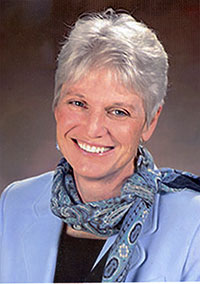
Mary Louise Bringle is Professor of Religious Studies at Brevard College. She received a 2014 Sabbatical Grant for Researchers for her project Whatever Became of Envy?. LI asked Mel to share about her project a forthcoming book, ENVY: EXPOSING A SECRET SIN.
MB: Recently, my theme song has changed by one consonant. In 2000, I discovered unexpected vocations for writing and studying hymns. These pastimes virtually consumed me for the next 13 years, up through publication of Glory to God, the new Presbyterian Church (USA) hymnal, whose selection committee I chaired. While helping congregations learn about this denominational project, I took my theme music from Robert Lowry’s gospel hymn, “How Can I [or We] Keep from Singing?” But once the hymnal was launched, I returned to the focus that opened my scholarly career: a fascination with the seven capital vices. A simple change of consonants frames my new concern: “How can we keep from sinning?”
When I examined this question in the pre-hymnology years of my scholarship, I looked in turn at despair, a traditional offshoot of the sin of sloth (Despair, Sickness or Sin?) and gluttony (The God of Thinness: Gluttony and Other Weighty Matters). With both those projects, as with the forthcoming book on envy, I was curious to see how wisdom from the cardinal sins tradition might shed light on current personal and social malaise. How would our relationships to God, ourselves, our neighbors, and our planet be transformed if we took seriously what this tradition disclosed about behavioral and attitudinal patterns that distort our living? What practices might we undertake to supplant these destructive patterns, or keep them from taking root in the first place?
Such questions are highly relevant for the undergraduates I teach. Increasing numbers of them, even at a religiously-affiliated institution, are dubious about the church. Not only do they not attend regular worship while at college; many of them come from families who view “organized religion” as a collection of meaningless rituals practiced by hypocrites who rail against sexual so-called sins while cavalierly ignoring practices that ravage other people, creatures,and the planet on which we live. Teaching about the vices thus helpfully introduces what Dorothy Sayers pointedly called “the other six deadly sins.” In traditional moral teachings of the church, my students are surprised to discover insights which help them make sense of their own lives. In contexts where performance is being regularly and comparatively evaluated—the classroom, the art studio, the recital hall, and the athletic arena—envy, though rarely identified by name, frequently rears its ugly head. Exposing this secret sin to the light of analysis proves therapeutic, as does discussing practices that have historically been recommended to counter it.
A new insight from my recent study of envy opens up the ecological relevance of such time-honored practices. A culture that regularlypromotes envy through its advertising (and ours is blatant in this regard) is simply not sustainable. Drives to possess and accomplish more than our rivals put serious drains on personal and planetary resources. The field of environmental virtue ethics thus has a great deal to say to, and to learn from, the tradition of the seven sins. Further, getting clear about what envy is and is not (by contrasting it, for example, with righteous indignation) helps in countering rhetoric about a mis-named “politics of envy,” supposedly lurking behind contemporary protests against income inequality.
In short, what early Christian moralists vividly identified in iconographic images and teaching tales as the “evil eye” that makes us “eat our hearts out,” long to be “in someone else’s shoes,” and live in a “dog eat dogworld” has never been more relevant—or more in need of exposure, prevention, and healing.